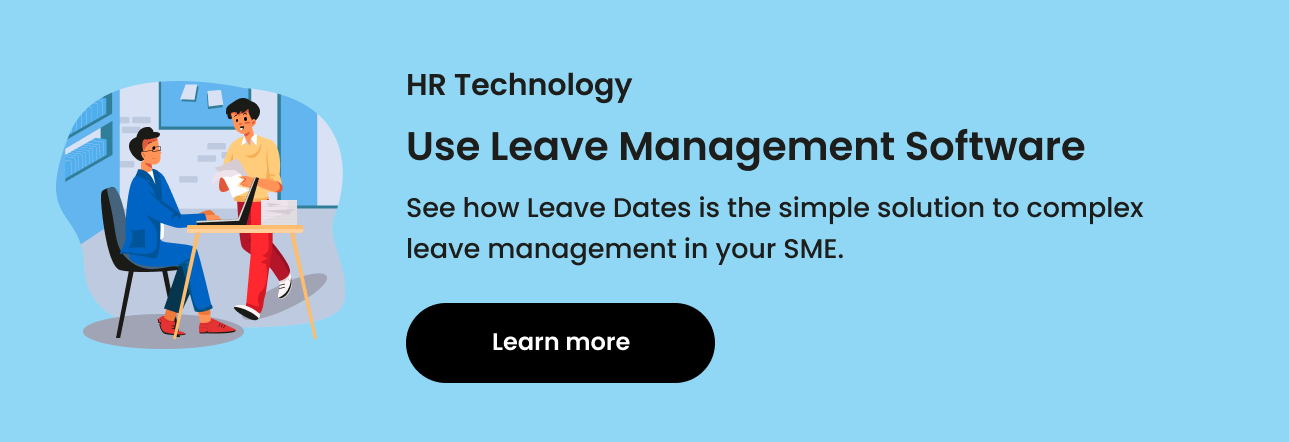
As summer draws to a close (boo!), tans fade, post-bank holiday recycling bins overflow and ice creams are no longer on offer in Sainsbury’s, those who’ve been off work for a while might be getting a nagging sense of dread…
Ah, back to work anxiety. When you’ve had time away, returning to work can be like the Sunday scaries dialled up to 100. And if you think ‘the fear’ is bad when returning from a nice holiday, that’s nothing to how daunted people can feel when returning to work from long-term leave.
What state did you leave your to-do list in? Has your cover done a good job? Have they done too good a job and stolen your office?! Has the canteen stopped selling your favourite sarnie? Can you cope with a full day of people and spreadsheets? What’s your email password again?!
Challenging returns to work come after a long period of absence due to an illness, injury, or big life event. Perhaps you’re adapting after a life-altering diagnosis, or have been bereaved and are still finding your feet in your ‘new normal’. More happily, maybe you’re a new parent, still more sleep-deprived than you’d like, daunted at the prospect of adult company and the need to form coherent sentences about things that don’t involve the presence, absence or regularity of bodily functions. The last ‘project’ you worked on involved play dough – and it wasn’t a success.
Whatever the reason for your absence, the return-to-work process can be tough. Things might have changed. You might have changed. How will you reintegrate, adapt and find your mojo again?
Table of Contents
- Support for returning workers
- What is a return to work interview?
- Benefits of RWT interviews
- How to prepare for an RTW interview
- Goal-setting
- Key takeaways
Support for returning workers
For business owners and HR managers, supporting your staff to transition back into their role (or perhaps a new one) should be a top priority. A smooth return will boost morale and engagement, reduce staff turnover and increase productivity. So how can you do it?
A great tool is the return to work (RTW) interview. This is a meeting between a team member who has been absent for a while and their line manager or an HR rep, to discuss their return to work. This could be an immediate return to their previous hours and role, or a phased return.
What is a return to work interview?
At the most basic level, it’s a chance to touch base, see how the person is and catch up on what’s been going on (for them and for the business) while they were away. You can ask what their goals are for their return and if they have any specific questions or concerns.
The purpose of a return to work interview is to:
- Talk about the reason for the absence (if unplanned) and whether or not it has been resolved – identifying underlying issues can help prevent absences in the future
- Assess the employee’s health and wellbeing (if absence was due to illness or personal reasons) to ensure they are fit to return
- Plan for a smooth transition
- Update them on any changes while they were away, to staffing, policies or operations
- Demonstrate support, reinforcing your commitment to the employee and stressing that the company values their contribution
Benefits of RWT interviews
Creating a return to work plan, beginning with the interview, offers a wide range of benefits on both sides. The headline ones being:
- Faster reintegration
- Higher productivity
- Improved/protected employee wellbeing
- Legal compliance
- Risk management
- A caring, open and compassionate workplace culture
- Strong employee–employer relationship
- Higher retention, lower turnover
- Reduced absenteeism and better absence management
- Early identification of workplace issues – allowing the employer to address root causes (stress, burnout, conflicts) of absence
The majority of these benefits also come with cost savings, making it a total no-brainer from the employer side.
How to prepare for an RTW interview
For an RTW interview to be a productive and useful discussion, both parties should prepare in advance. Otherwise, it can end up a vague, unfocused and potentially awkward chat that nobody gets anything out of. If the employee was off due to an illness or injury, you could also include Occupational Health in this meeting or make a referral.
Some questions you might want to ask as the employer:
- How are you feeling about returning to work?
- If there were any issues, health or professional, that led to your absence, have these now resolved?
- Are there any ongoing medical treatments, appointments or impacts that we need to be aware of?
- Do you feel able and ready to resume your normal role and duties, or do you need any adjustments?
- Is there anything we can do to support your return to work? (If you have an EAP – Employee Assistance Programme , signpost this)
Some questions/topics to think about as the employee:
- What support will I need to return to work successfully? (Eg flexible hours, assistive tech, modified/fewer duties)
- Are there any aspects of my role that I might struggle with?
- How can I communicate any ongoing health needs or other issues? Is there any documentation I can provide to explain the nature of my needs?
- What resources are available to help me transition back to work?
It’s important to keep a record of the meeting, what was discussed and any agreed actions, adjustments and targets. These can then be referred back to later and there is no scope for misunderstanding.
Goal-setting
In addition to asking and answering questions, you should agree on any follow-up actions (eg progress monitoring, further meetings, additional support or resources to be provided) and set goals to make sure expectations are aligned.
Targets and plans should be realistic, achievable and mutually agreed upon, with clear timelines. The goal-setting process might look like this:
- Assess and understand the employee’s current situation, capacity and abilities.
- Review their role and responsibilities and their ability to deliver this.
- Set SMART goals (specific, measurable, achievable, relevant and time-bound), for example “Build up to two customer-facing hours per day within 3 weeks”.
- Agree a phased return to work , with a gradual increase in responsibilities and regular check-ins and review dates in the diary.
- Build in flexibility – this is just a plan, it’s not set in stone. Be ready with alternative tasks or goals if the original goals prove too much (eg swap physical for admin tasks).
- Give regular feedback and keep offering support!
Remember that this should be a collaborative process, so that the employee feels a sense of ownership over the plan and is motivated to complete it. They should have equal input and feel comfortable moving forward with the agreed plan and goals. Document the plan and goals in writing, signed by both parties.
As an important side note, as with all HR practices, you should always seek appropriate legal advice to ensure your RTW policies and procedures are appropriate and compliant.
Key takeaways
Ultimately, return to work interviews is a key part of a good leave management policy and do wonders for the employee–employer relationship, the health of which should always be a top priority of any modern organisation.
With good planning and preparation, open and honest communication and clear, realistic targets, RTW interviews can be the launchpad that propels returning team members back into working life with confidence, and not worry. Rather than a one-off meeting, they should be seen as the start of an ongoing, constructive dialogue.
Along with the interview, compassionate policy, reasonable adjustments and access to supportive resources are essential to ensuring a successful return to work for all involved.
Time to get the welcome party ready!




